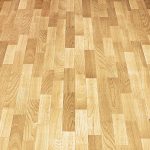If your company makes medical devices like catheters or equipment to hold bodily fluids, you know why leak prevention is important. However, many other businesses have leak concerns with packaging and pressure leak test equipment is an important consideration. But how does this equipment work and can it help you improve your business? Let’s take a look and see.
Defining Leaks
Leaks are liquids or gasses flowing out of a container. It usually happens from cracks, holes, and worn or improperly installed seals or gaskets. In order for leaks to happen, you need a difference in pressure. When a leak develops, it will always flow from high pressure to low pressure.
Pressure leak test equipment can measure more than one kind of pressure. For example, leaks usually flow from the positive pressure (inside a hose or container) to atmospheric pressure. However, this is not the only scenario. If you have a vacuum system, a leak can come in from atmospheric pressure and affect the vacuum inside a closed system.
Measuring Leaks
If you want to measure leaks that enter atmospheric pressure, you can use cubic millimeters or centimeters. A typical leak is expressed in cubic centimeters per second (cm3/sec) or cubic centimeters per minute (cm3/min). When measuring leaks into atmospheric pressure, use millibar-litre per second (mbarll/sec).
Which Pressure Leak Test Should You Use?
Here are some of the things you’ll need to know, to help you determine which equipment to use:
- Is the system clean and dry?
- Is it completely sealed?
- What is the ambient temperature?
- What are your leak limits?
- Is the system flexible or rigid?
When you go to leak specialists, they’ll help you find the best equipment for the job. They have years of experience in the business and can show you all of your available options.







